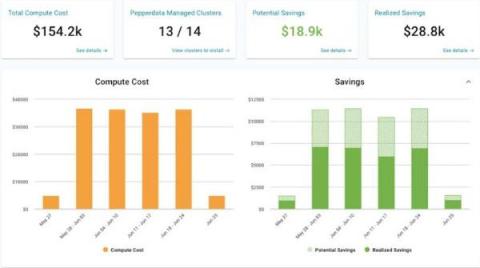Operations | Monitoring | ITSM | DevOps | Cloud
Analytics
Creating Databases, Schemas, and Tables on pgAdmin
Choose Your Weapon Against Costly Cloud Bills
Data Lifecycle Management: A Complete Guide
Control Plane vs. Data Plane: Use Cases, Advantages & Drawbacks
A Detailed Guide to Docker Secrets
This post was written by Talha Khalid, a full-stack developer and data scientist who loves to make the cold and hard topics exciting and easy to understand. No one has any doubt that microservices architecture has already proven to be efficient. However, implementing security, particularly in an immutable infrastructure context, has been quite the challenge.
Turning data into mission value in government and education
Government and education leaders estimate that data volume at their organizations will increase by 59% over the next three years. Although having more information than you need is (arguably) better than not having it when you need it, the sheer volume of data can make it challenging for teams to pinpoint exactly what data will bring value to their mission goals.
Observability vs. Monitoring: Understanding the Differences
This post was written by Siddhant Varma. Scroll down to read the author’s bio. Software development isn’t just about building and deploying software. There’s a wide range of operations and activities you need to tackle even after you’ve successfully deployed it. The two most common are observability and monitoring. While they’re similar in a lot of ways, it’s important to understand that they are not exactly the same, and each has its own purpose.
Creating Databases, Schemas, and Tables on pgAdmin
Intel Leverages Telegraf to Deliver Platform Visibility
Since 2020, the Intel team has been contributing to Telegraf, including both telemetry from Intel-specific platform features (such as Intel® Resource Director Technology, Intel® Dynamic Load Balancer, or power statistics from Intel-based platforms) and telemetry gathered from generic tools and frameworks; for example, Data Plane Development Kit (DPDK), Libvirt, P4 Runtime, or Reliability Availability Serviceability (RAS).











